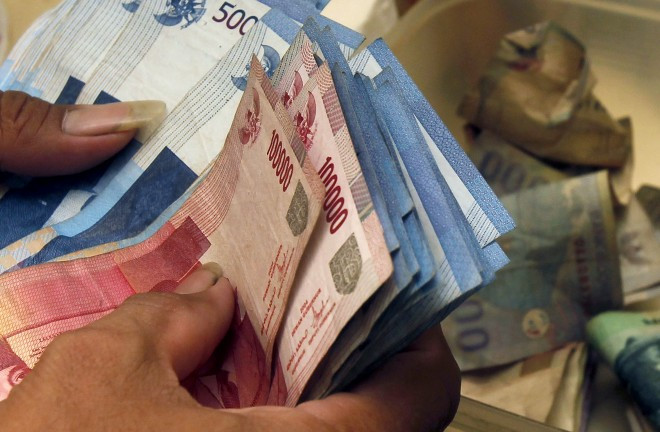Asian Currencies Higher as Dollar Corrects on Lower NFP Addition; Malaysian Ringgit Off 10-Month Low

Asian currencies recouped some of their recent losses as Friday's weaker than expected US non-farm payroll data weighed on the greenback.
However, the correction is unlikely to continue for long given that the labour market recovery of the US is still on track, traders said.
Analysts now await further economic indications from the US as well as the individual countries of region.
The US non-farm employment addition in October was 214,000, down from 236,000 in September and against analysts' forecast of a rise to 265,000.
At the same time, the unemployment rate dropped to a six-year low of 5.8% in October, revealing the strength of the labour market of the world's largest economy.
The USD index, the gauge that measures the strength of the greenback against a trade-weighted basket of major currencies, had risen to a new four-year high of 88.18 on Friday but the jobs data pushed it down to 87.59 by the end of the day.
On Monday, the dollar index continued lower and trade as low as 87.33 during the Asian session.
Malaysian Ringgit
The Malaysian currency had fallen to a ten-month low against the dollar on Friday but the dollar move later in the US session that continued on Monday helped the ringgit reverse some of its losses.
The USD/MYR traded as low as 3.3263 from Friday's close of 3.3425 and compared to Friday's peak of 3.3473.
The Malaysian central bank left the main rate unchanged at 3.25% at the review meeting on 6 November and said the economy remains vulnerable to global shocks.
Malaysia's third quarter GDP data is due on 14 November. Analysts expect the country to continue the 6.4% year-on-year growth rate but the sequential rate to slow down.
Indonesian Rupiah
The rupiah moved to 12,140/dollar from 12,220 helped by the dollar drop but the Asian unit has kept its overall downtrend. The USD/IDR pair has been trending higher since 20 October and various data releases since then have only weakened the sentiment.
Indonesian GDP growth slowed to 5.01% from a year earlier in the third quarter from 5.12% in Q2 while core inflation slowed to 4.02% from 4.04%, data last week showed.
The big drop in crude oil prices has helped the country to cushion the trade deficit a little but the market is waiting for more policy cues from Bank Indonesia, the central bank, which is scheduled to decide on rates on Thursday.
Indian Rupee
After breaking below 62.0 on 30 September, the USD/INR pair has been holding above 61.0, though the upward move has not gathered enough momentum to break the 62.0 barrier any time soon.
Data in the recent past has not been great, but reform hopes have increased with the diesel price deregulation and state election wins by the National Democratic Alliance, the ruling political bloc of Prime Minister Narendra Modi.
Markets are now waiting for the India third quarter GDP data on 28 November. This time analysts do not expect a repeat of the big positive surprise in the previous quarter or a substantial decline from the 5.7% rate recorded in Q2 either.
Chinese Yuan
The yuan strengthened to 6.1137 against the dollar on Monday, bouncing back from a two-week low of 6.1230 on Friday, despite data showing weaker price pressures in the world's second largest economy.
China said the year-over-year consumer price inflation for October was 1.6%, unchanged from September and in line with market expectations. The month-on-month change was nil, when the consensus was for a 0.1% rise, down from 0.5% in the previous month.
Another release showed that factory gate deflation worsened. The producer price index fell 2.2% in October, steeper than the September fall of 1.8% and worse than analysts' forecast of a 2.0% drop.
© Copyright IBTimes 2025. All rights reserved.






















